Latex paint is water-based and produces a colorful finish — so it’s perfect for furniture surfaces.
To apply latex paint on furniture, prep the furniture, remove the previous finish (if any), sand it, then apply primer and paint.
You don’t need to seal latex paint for indoor furniture, but you need to seal it for outdoor furniture.
Note: You can use matte, satin, flat, semi-gloss, or eggshell latex paint finish.
Does Latex Paint Protect The Furniture?
Latex paint doesn’t protect furniture as it isn’t formulated with protective additives and isn’t durable. Its finish will peel off within a few months if you apply it on outdoor or high-traffic surfaces.
Latex paint is water-based and isn’t resistant to UV, water, moisture, or scratches. It produces a textured finish that isn’t durable or resistant and doesn’t protect the surface underneath.
Use latex paint for indoor or decorative surfaces as they aren’t exposed to constant water or outdoor weather elements. Latex paint is easy to apply, dries fast, and forms a colorful finish — perfect for indoor surfaces.
To use latex paint for outdoor furniture or to protect a surface, seal its finish with a waterproof sealer. The waterproof sealer will produce a glossy waterproof coating over the paint and protect it from different elements (water, moisture, scratches, etc.).
Related Read: How To Paint Concrete With Latex Paint?
Do You Need to Apply Primer Before Latex Paint?
You need to apply primer before latex paint to improve the adhesion, cover imperfections on the surface, and get a durable and smooth finish.
The purpose of the primer is to cover imperfections, bumps, holes, and cracks in the surface and produce an undercoat for the paint to stick to.
The paint may not stick, produce a smooth finish, may develop cracks or peel off if you don’t apply a primer before latex paint.
Use a water-based primer for latex paint as they have the same solvent, water. You can use oil-based primer too, but the adhesion won’t be as good because of the different solvents, oil and water.
How To Apply Latex Paint On Furniture?
To apply latex paint on furniture, do the following things.
- Prep the Furniture.
- Remove The Previous Finish (If Any).
- Sand the Furniture.
- Apply Paint Primer.
- Apply Latex Paint.
- Seal the Finish.
The tools you need for this project are listed below.
- Foam Brush
- Latex Paint and Primer
- Fine-Grit Sandpaper
- Paint Stripper For Wooden Surfaces
- Drop Sheets
- Painter’s Tape
- Wood Filler
- A Clear Topcoat
- Synthetic Brush.
1. Prep The Furniture
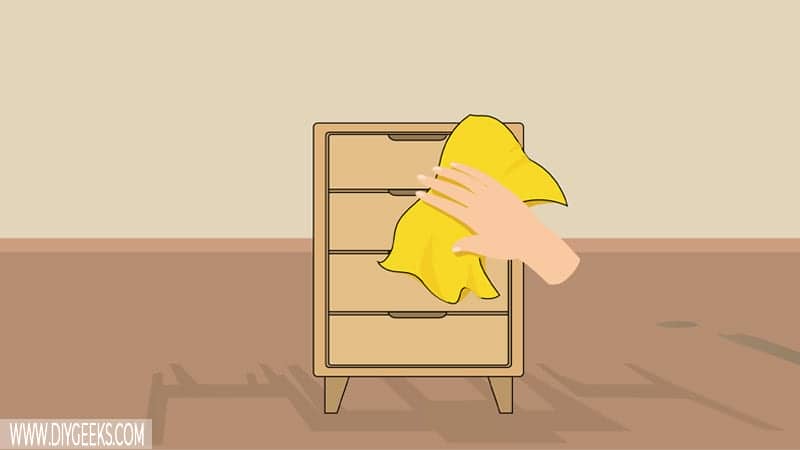
To clean furniture before painting, do the following things.
- Use TSP (Trisodium Phosphate).
- Mix 1/3 cup TSP with 2 gallons of water.
- Pour the mixed TSP into a clean rag and use the dampened rag to wipe the surface.
- Clean the surface.
- Let the furniture dry.
Note: Remove or cover nearby objects (or materials) to prevent paint splatter. Open all windows and doors to create a well-ventilated area.
2. Remove The Previous Finish (If Any)
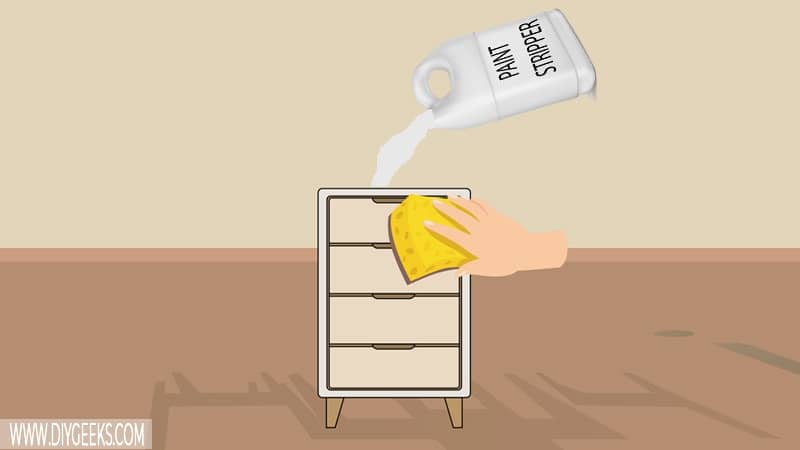
Remove the previous finish if the furniture is stained, painted, or sealed.
Optionally, you can keep the previous wood stain or water-based paint finish if it’s in good condition, but you must remove the entire finish if it’s oil-based or sealed.
To know the type of finish the furniture has, do the following things.
- Pour rubbing alcohol into a rag.
- Use the dampened rag to wipe the furniture.
- If the paint comes off it’s water-based.
- If the paint doesn’t come off, the paint is oil-based or sealed.
To remove water-based paints, use rubbing alcohol, sandpaper, or water-based paint removal. To remove oil-based paints or sealer, use petroleum-based solvents such as mineral spirits, turpentine, or solvent-based paint remover.
Don’t use vinegar, baking soda, or acetone to remove paint from wood furniture because they will damage the material.
3. Sand the Furniture
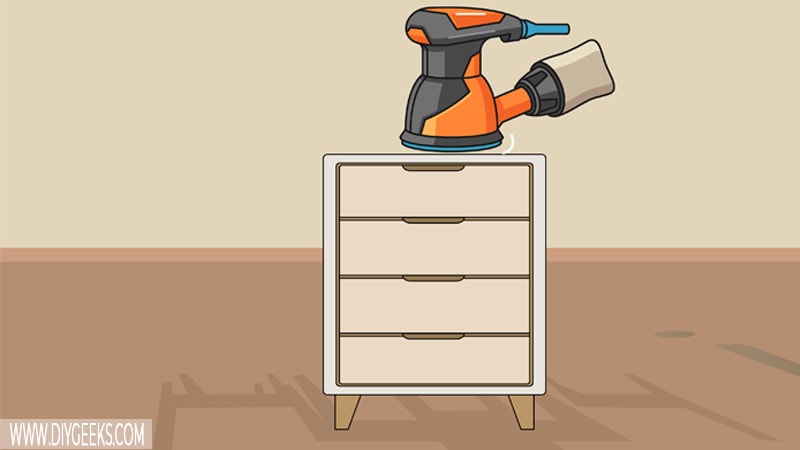
Use medium-grit sandpaper (100-grit) to sand the furniture and remove cracks and imperfections. Use coarse-grit sandpaper (40-grit) if the surface has rough imperfections. Use fine-grit sandpaper (220-grit) to smoothen the surface after removing the imperfections.
If the furniture has deep holes, use wood filler to fill (or fix) them. To use wood filler to fix holes in a surface, do the following things.
- Apply the wood filler in the holes on the surface.
- Remove the excess wood filler.
- Wait for the wood filler to dry.
- Sand the surface with fine-grit sandpaper (220-grit).
- Remove the dust.
Related Read: How To Sand Latex Paint?
4. Apply Paint Primer
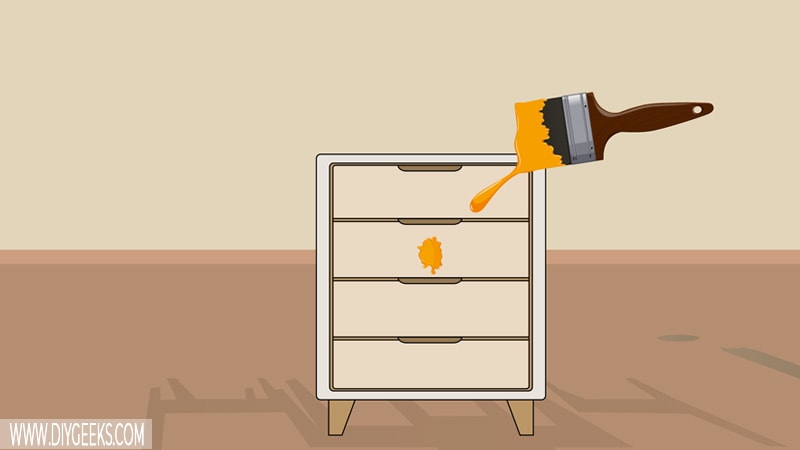
Apply two (2) coats of latex primer with a paintbrush to the furniture to improve the adhesion and the durability of the finish. Wait until the first primer coat dries (around 30-40 minutes) before applying the next one.
5. Apply Latex Paint
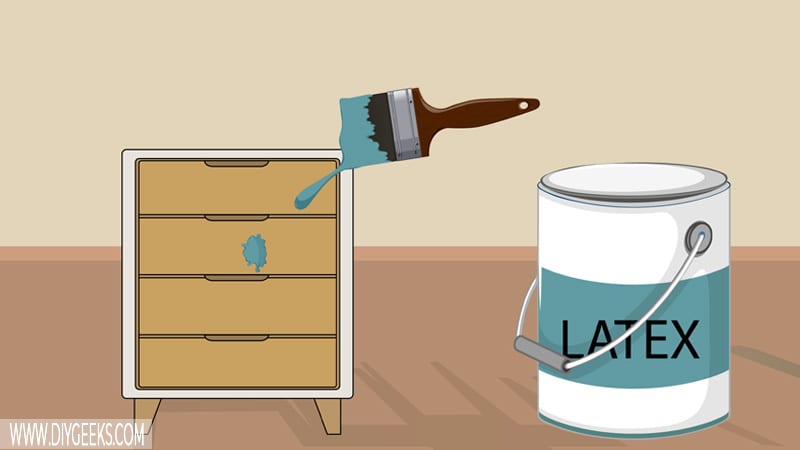
Apply 2 coats of latex paint on furniture with a paintbrush, roller, or sprayer after the second primer coating dries.
Thin latex paint by adding 1/2 cup of water to 1 gallon of it if you apply it with a sprayer. You don’t need to thin it if you apply it with a roller or brush (unless its flow is too thick).
Wait until one coat of paint dries before applying the next one. Latex paint takes 3 hours to dry between coats.
Optionally, sand between coats of latex paint with fine-grit sandpaper (220-grit) to get a better finish quality. Don’t sand the final coating, unless you apply a sealer over it.
6. Seal the Finish
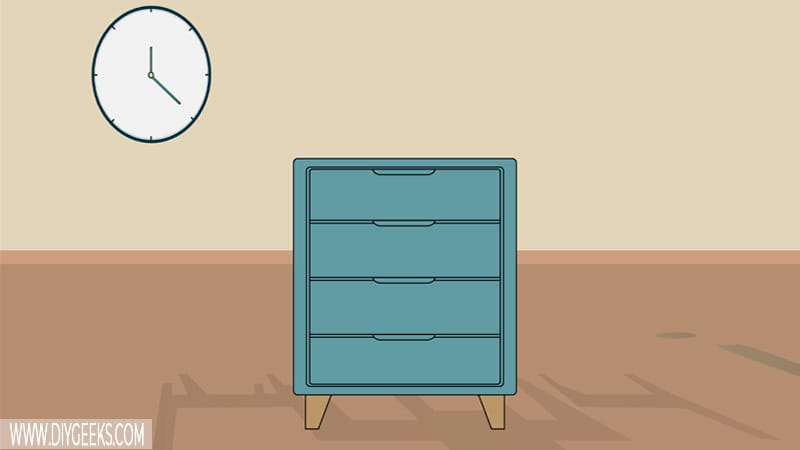
Seal latex paint on outdoor furniture by applying 2-3 coats of exterior polyurethane or varnish over it. The sealer will produce a glossy moisture-resistant coating to protect the paint and surface underneath.
Sealing indoor surfaces isn’t mandatory.
Is Sealing Latex Paint on Furniture Necessary?
Sealing latex paint is necessary for outdoor surfaces that are exposed to constant water. Latex paint isn’t a protective paint and won’t protect surfaces from moisture or water.
Unsealed outdoor latex paint furniture won’t last more than 1 year before getting washed off, while it will last more than 3 years if you seal it.
The sealer (polyurethane, varnish, lacquer) will produce a glossy water-resistant layer over the paint and protect it from water, moisture, scratches, and other elements. Most wood sealers are colorless (transparent) so they won’t interfere (or change) the color of the finish.
For outdoor surfaces, use exterior sealers as they are formulated with extra protection additives, including UV-protection, and will protect the surface better.
You don’t need to seal latex paint for indoor or decorative surfaces as they aren’t exposed to weather elements or constant water so they don’t need much protection.
Related Read: Is Latex Paint Good For Metal?
[su_youtube url=”https://www.youtube.com/watch?v=jcyC3EBdGS0″]


